If you’ve ever owned a porcelain bathroom sink, you may have noticed hairline cracks appearing on the surface over time. While this may not seem like a big deal, it can worsen if allowed to continue. It is a common problem and can be caused by a variety of things. In this blog post, we will take a closer look at what causes hairline cracks in porcelain bathroom sinks, how to fix them, and steps that can be taken to prevent them from happening in the first place.
What Are Hairline Cracks?
Hairline cracks are those tiny black lines that run across the surface of your sink. If you have been in homecare forums, you might have probably heard many homeowners complaining about hairline cracks in their sinks and how they suddenly appear from nowhere. While this is unfortunate, they are a very common problem that can happen to any porcelain sink. When they first appear, it’s important to note that they are not a sign of any structural damage and will likely not affect its performance or function. However, if left untreated for too long, these cracks can grow bigger over time and cause water leakage around the edges which could lead to mold growth.
What Causes Hairline Cracks In Porcelain Bathroom Sinks?
The causes of hairline cracks in porcelain bathroom sinks are varied. If you have a crack in your porcelain bathroom sink, it could be due to any of the following reasons:
1. Impact Damage
Dropping a heavy object on your porcelain sink or putting too much weight on top of your bathroom sink is the most common culprit of hairline cracks. Accidents do happen and with a fragile material like porcelain, it doesn’t take much for it to crack. This can occur in a lot of ways.
Moving your sink in and out of the bathroom, dropping heavy objects on it, or hitting it with something heavy may cause hairline cracks in your porcelain sink. If the impact is great, it could cause the sink to shatter into pieces here and there. Sometimes if the impact is minor, you may not notice any damage to your porcelain bathroom sink but would occur a few days later because the effect takes some time for it to show up on the surface.
Children in your home could also be responsible for hairline cracks on your bathroom sink due to their lack of care when using it. For example, if they are brushing their teeth and accidentally drop something into the sink basin, this item may hit the sink and cause hairline cracks.
2. Thermal Shock
Another common cause of hairline cracks is thermal shock. This can happen when you suddenly change the temperature of your porcelain sink from hot to cold or vice versa. For example, if you run hot water and then quickly pour cold water into the sink, or turn on the hot tap when the basin is cold, the sudden change in temperature could cause your porcelain sink to develop a hairline crack. Normally, mild temperature changes will not cause any damage but extreme temperature changes can cause porcelain bathroom sinks to expand and contract, putting pressure on the sink’s structure.
3. Natural Occurrence
When porcelain sinks accrue some age, they can naturally develop hairline cracks. The older your porcelain sink is, the more likely it will develop hairline cracks because of natural wear and tear. Normally, you wouldn’t experience this until your sink has been used for many years but it all depends on the quality of your sink and how often you use it.
4. Chemical Damage
Chemicals can also be a culprit of hairline cracks in porcelain bathroom sinks. Chemicals like acid or products which contain acid are sometimes used to clean and disinfect surfaces (I don’t recommend using acid in your bathroom). However, when these chemicals come into contact with porcelain bathroom sinks, they can damage the surface and leave tiny micro-fissures that will eventually lead to hairline cracks. The acid effect on porcelain sinks depends on the type of porcelain which we will discuss in another article, but normally, the longer an acid product is left on the porcelain bathroom sink surface, the more potential damage it can cause to your sink. Although acids are the least cause of hairlines in porcelain sinks, they pose a threat that needs to be taken into account.
5. Plumbing Stress
You are likely to develop hairline cracks in your bathroom’s porcelain sink if it experiences undue pressure during installation or repairs. During installation, if the plumber is not careful and uses too much force when tightening the faucet or sealant, it can cause your sink to develop hairline cracks. This kind of pressure on your porcelain bathroom sink may also happen during repairs if someone tries to fix a leak without knowing what they’re doing. It’s always important to get a professional to do any repairs on your porcelain sink to avoid causing more damage.
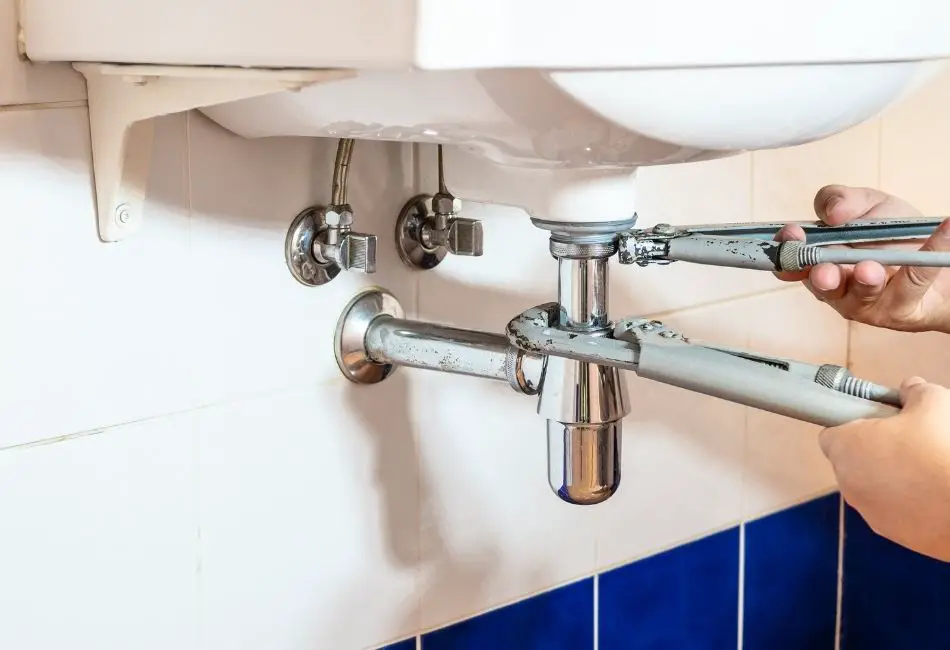
6. Rust
Manufacturers in an effort to strengthen the integrity of porcelain sinks may use small amounts of steel or iron in their products. Although the amount used is very little, it could still cause rust to form over time because it is exposed to frequent moisture. The formation of rust can weaken your porcelain sink and cause hairline cracks to form.
When steel rusts, it causes the metal to expand. If this expansion happens on a small area of your porcelain sink, it will create stress and eventually cause hairline cracks.
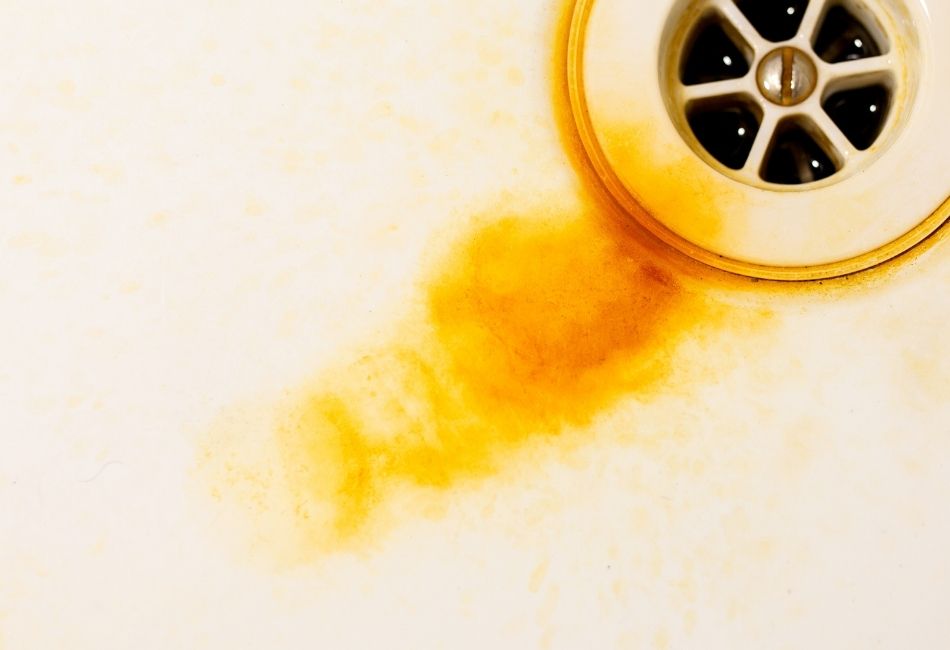
How to fix hairline cracks in a porcelain bathroom sink
If you notice a hairline crack in your porcelain bathroom sink, don’t panic. You can easily repair it.
Things Needed
- All-purpose cleaner/mild cleaner
- Microfiber cloth/towel
- Medium-grain sandpaper
- Porcelain repair compound/epoxy
- Blade/putty knife
- Paint
- soft sponge
Procedure
Step 1: Clean the sink thoroughly.
Before you begin any repair work on your porcelain sink, you need to clean it thoroughly. This will remove any dirt, grease, or debris from the surface of your sink. Use an all-purpose cleaner or any mild cleaner and sponge to clean the sink and wash it down with warm water. After cleaning, use a towel or microfibre cloth to dry the surface of your sink. Make sure it is completely dry before you begin any repair work on the sink. You can use a hairdryer on a low setting if necessary to ensure full dryness.
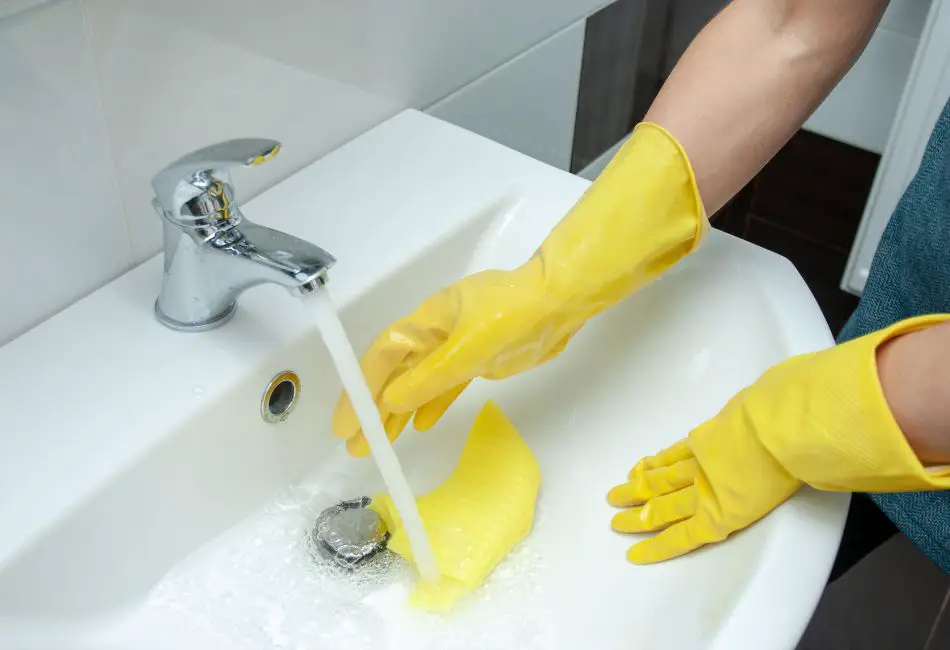
Step 2: Sand down the affected area
Use medium-grain sandpaper to gently rub against the hairline crack. Don’t rub too hard, rub just enough and directly on the affected area to make the edges rough but not destroy the porcelain surface of your sink. The reason for sanding down the area is to create a better surface for the filling compound to adhere to. You can run your fingers along the edges of the hairline crack to feel for roughness before applying the filler.
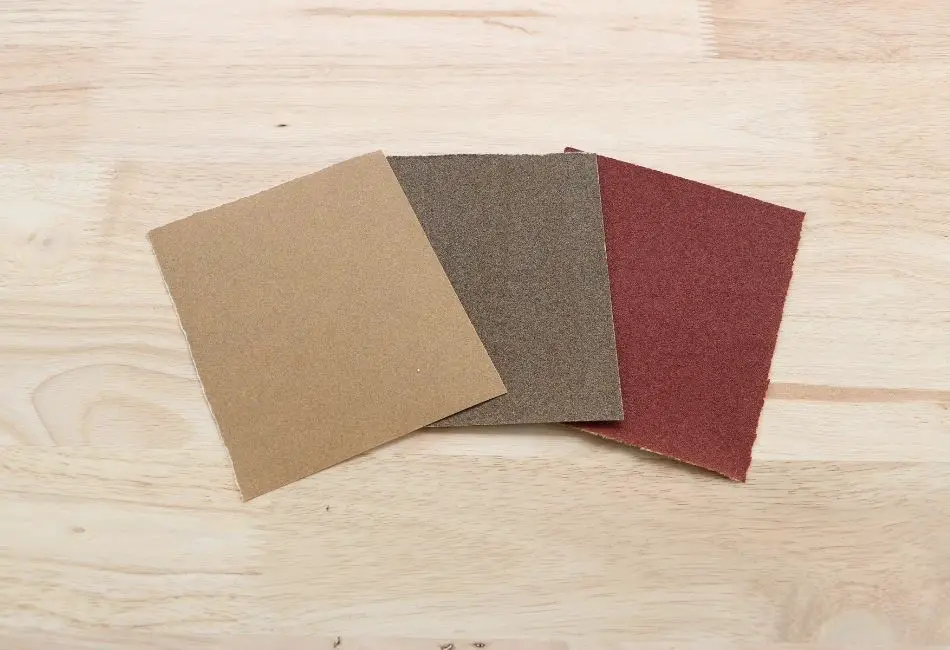
Step 3: Preparing and mixing the compound
Once the surface is clean and free of any debris, it’s time to start repairing the crack. There are many types of porcelain repair compounds/epoxies on the market, so select one that is specifically designed for repairing porcelain. On your next visit to your convenience store, you can grab yourself a repair compound, but if you are not going anytime soon, you can check out my favorite porcelain repair compound on Amazon.
Some repair compounds are pre-made but if you can’t find pre-made ones, get one that is easy to mix. Read the manufacturer’s instructions on how to mix or prepare the compound before applying it.
One major thing to consider when choosing epoxy is the color. If your sink is white and you use black epoxy, it will be evident and may not look good. You don’t want to have a sink that looks like it’s been patched up. So, if you’re not sure about the color of epoxy to use, try to find one that is as close in color to your sink as possible.
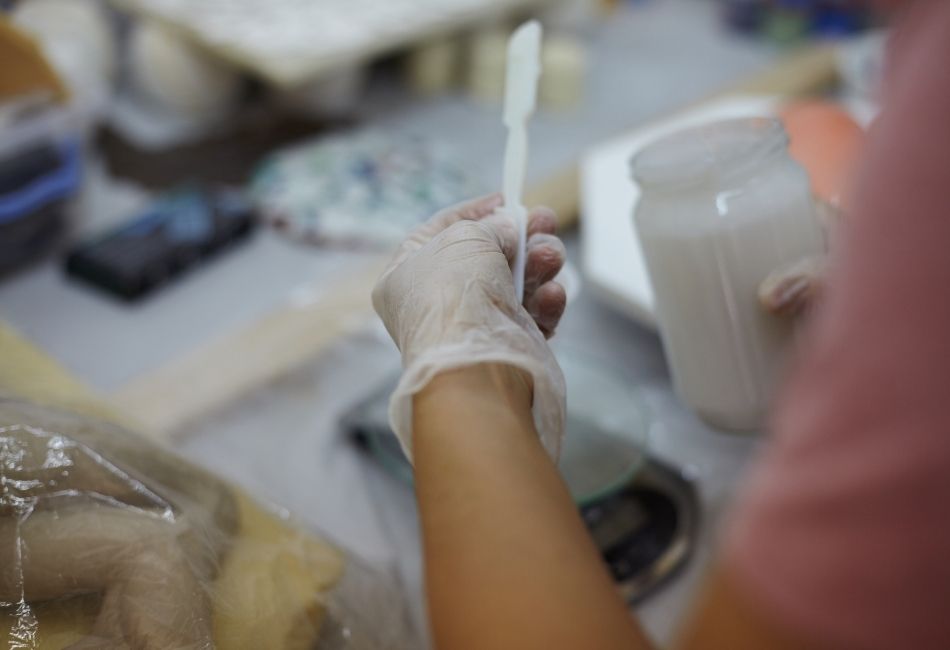
Step 4: Applying the compound
Using a blade/putty knife, apply the compound or epoxy to the crack and spread it evenly over the surface. Make sure that you fill in all of the cracks and crevices. Allow the compound to dry completely. You may need to apply multiple layers of epoxy, depending on your crack. After applying the compound, gently use the sandpaper over the dried epoxy to give it a smooth finish.
Step 5: Painting
Once all cracks are filled in and dried completely, it’s time to paint over them with a matching color so that they won’t be visible. Apply one or two coats of paint to match the color of your sink. Allow the painted surface to dry completely before using it again.
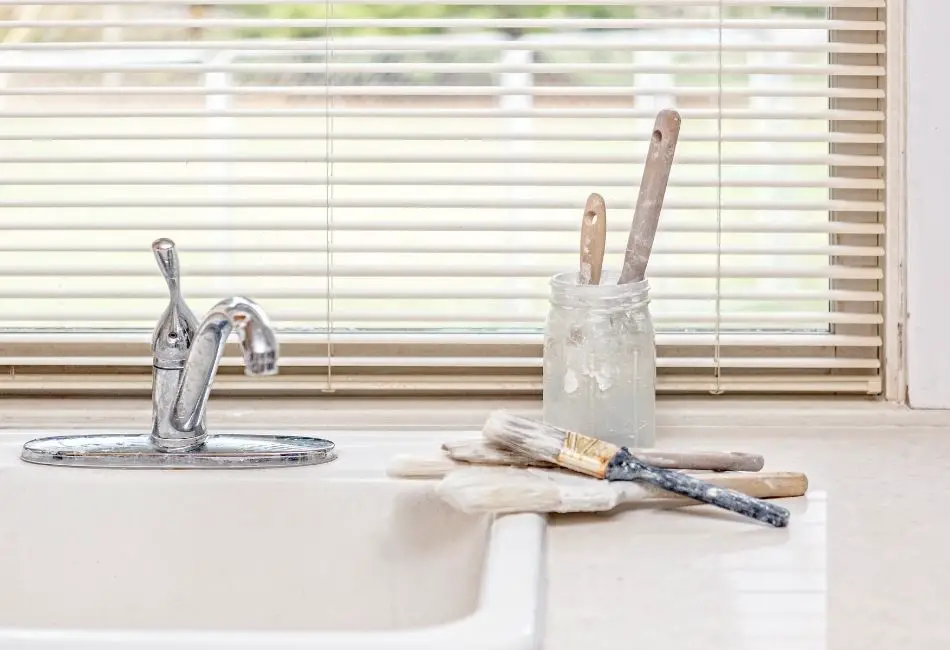
What Happens If Hairline Cracks In Porcelain Sinks Are Not Fixed?
Not fixing hairline cracks in your porcelain sink is a recipe for disaster. When you notice a crack like that in the sink, it means the problem has just started and will become worse if not attended to. The hairline will start widening and spreading until the sink becomes unusable.
If not treated properly and on time, it can lead to leaks and the eventual breaking of the sink in some instances. It is best to repair the damage as soon as it occurs to prevent future problems.
Prevention tips for avoiding hairline cracks in a porcelain bathroom sink
The best way to prevent hairline cracks in your porcelain bathroom sink is by taking some simple precautions.
Here are a few tips:
- Avoid using harsh chemicals or cleaners on your sink, especially if it is old. These can weaken the surface of your sink and cause hairline cracks to form over time.
- Avoid dropping heavy objects on your sink. This can cause the surface to crack and lead to additional hairline cracks in the future.
- Don’t alternate between hot and cold water in a very short time. Extreme temperature changes can cause your sink to crack over time. When running hot water in your sink, always wait for a few minutes for it to cool down before running cold water.
- Use a professional plumber to install your sink. If the installation is not done properly, it can lead to hairline cracks in the future.
Summary
To summarize, hairline cracks in porcelain bathroom sinks can be caused by a variety of factors, such as age, misuse, or chemical damage. However, they can often be repaired. Once you see a crack, it will continue to spread unless you repair it. Prevention is key and some simple tips include avoiding harsh chemicals or cleaners, dropping heavy objects on the sink, and alternating hot and cold water quickly can help prevent it.
If you are unsure about anything, it is always advisable to seek professional advice.
FAQS
Q: Are hairline cracks in porcelain sinks invisible?
A: Hairline cracks in sinks are always visible. Though they seem small, they don’t go unnoticed. Even if the sink is colored you can still see it. As a matter of fact, the top layer of colored sinks is glazed with that color so any hairline cracks in the glaze expose the underlying porcelain. So hairline cracks in porcelain sinks are not invisible.
Q: Can hairline cracks in porcelain sinks cause water leakage?
A: Yes, hairline cracks in porcelain sinks can cause water leakage. At the initial stages, it may not cause any leakage but as time goes on and it is not treated, water will start penetrating through the crack resulting in leakage.
Q: Can I use my porcelain sink if it has a hairline crack?
A: Yes, you can use your porcelain sink if it has a hairline crack. Having a hairline crack doesn’t make the sink unusable. But try and repair it as soon as possible.
Q: Is it better to repair a hairline crack in porcelain sinks or replace the sink altogether?
A: You don’t need to replace the sink. Hairline cracks can always be repaired. Repairing it is easy and less costly than replacing it.

